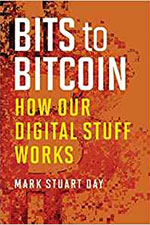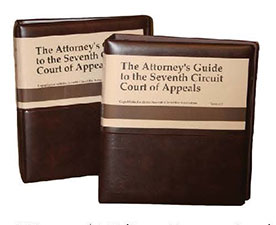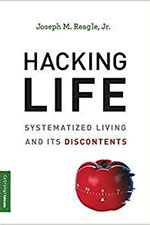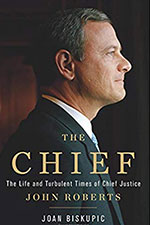 VERDICT: A Tree Died for This?
VERDICT: A Tree Died for This?
Bits to Bitcoin: How Our Digital Stuff Works
By Mark Stuart Day (Boston, MA: The MIT Press, 2018). 368 pgs. $29.95. Order, http://mitpress.mit.edu.
Reviewed by Lori S. Kornblum
I approached this book with high expectations. I expected to learn something about the inner workings of computers, to understand what Bitcoin is all about and maybe even how it works. Google Books describes the book as “[a]n accessible guide to our digital infrastructure, explaining the basics of operating systems, networks, security, and other topics for the general reader.”
I consider myself a general reader and reasonably well educated. However, the book is hypertechnical and impossible to understand. Even reading it more than once, and starting at the ending chapters to see whether, once read, a reader could better understand the beginning chapters, I found that to understand the book, one would need to outline each chapter, diagram each sentence, and look up most of the words in an encyclopedia of computer terms.
I am not willing to put that amount of effort into a book that is supposed to be for general readers. For example, in the explanation of Bitcoin, the author states that the goal for Bitcoin is “a shared extensible recordkeeping system for a community of untrusting participants.” That is the introduction. I have yet to figure out what this means, even after reading the previous chapter twice. The chapter in which this sentence is located continues, “Some systems achieve a stable permanent record by using physical irreversibility.” Whatever that means.
Want to Review a Book?
Please request a book and writing guidelines from Wisconsin Lawyer managing editor Karlé Lester, at klester@wisbar.org or (608) 250-6127. Reviewers may keep the book reviewed. Reviews of about 500 words are due within 45 days of receiving the book. Reviews are published, space permitting, in the order received and may be edited for length and clarity.
The author then tries to explain this by analogy. “For example, archival storage media such as write-once optical disks are designed so they cannot be altered once data is written onto them: there is simply no way to erase or rewrite them.” Whatever that means.
About 90 percent of the sentences in the book are similar to these. The author attempts to accommodate for the less informed by using analogies, in fact so many that he provides an index to the analogies, without linking them to the underlying concepts. The analogies are unhelpful and are so complex that I found myself reading them two or three times to understand them. After that, I would then try to apply the analogies to the main point and confess that the main point was lost on me.
Enough said. Reading this book is as useful as trying to understand how to buy a car by starting with engineering theory of combustion and metallurgy. I assumed that the book was useful for someone, and initially I did not give it the lowest rating. However, I then tested the book on my husband, who has both an M.D. and a Ph.D., and he could not understand anything in it either. A reader reviewing the book on Amazon.com, who has a Ph.D. in biochemistry, concurred. He was in a “fog” by chapter 8. (The book has 27 chapters.)
The blurbs on the back cover are from computer science professors, a science museum curator at the Smithsonian, and the president of Quoin Inc., a software company. No recommendations from a member of the general public are included.
In conclusion, this is a book not worth reading.
Lori Kornblum, Boalt 1982, is an adjunct faculty member at Marquette Law School and Northeastern University Law School and an instructor at Milwaukee Area Technical College. She has a private practice in Mequon.
 VERDICT: Touchdown!
VERDICT: Touchdown!
The Attorney’s Guide to the Seventh Circuit Court of Appeals
By Stephen E. Arthur et al. (Madison, WI: State Bar of Wis. 6th ed. 2018 & Supp.). 890+ pgs. $195 (State Bar members), $245 (nonmembers). Order, https://marketplace.wisbar.org.
Reviewed by Nick Zales
Coauthored by numerous appellate attorneys, The Attorney’s Guide to the Seventh Circuit Court of Appeals provides a wealth of knowledge on Seventh Circuit appellate practice and procedure. It explains the appellate process by providing useful and practical information in an easy-to-read fashion. Whether you are new to federal appeals or a seasoned lawyer, this book will save you a great deal of time, effort, and aggravation.
Seventh Circuit appeals are complex. They require a number of procedural steps beyond those needed for state court appeals. Some are easy to deal with, others are more complex. This book will help guide you through them. The Seventh Circuit is very exacting in what it expects of appellate counsel. This guide will help alleviate the pressure that comes with your first federal appeal and provide useful information for future appeals.
The two volumes’ 16 chapters cover everything from the organization of the court to assembling the record, motion practice, standards of review, briefing, and oral argument. Covering both criminal and civil appeals, the book is laid out in typical State Bar of Wisconsin fashion. Each chapter has a detailed table of contents and contains a wealth of detailed analysis, insight, and authority. Many of the chapters have their own appendix with the forms the Seventh Circuit requires lawyers to use. This is a great time-saver. The authors, experienced appellate counsel and court personnel, provide countless invaluable suggestions based on their experiences. For many purposes, the information in a chapter will completely answer your questions and give you the authority you must cite. In other situations, the information provides a solid starting point for further research.
Sprinkled throughout the book are useful charts, forms, and numbered lists summarizing a course of action and providing great detail on one or two pages. There are examples of what your brief and related papers should look like. Summarized information such as this is invaluable.
The book contains an appendix that sets forth the complete Federal Rules of Appellate Procedure and the corresponding Seventh Circuit local rule. Another appendix contains the Seventh Circuit’s operating procedures. It wraps up with a useful table of cases, statutes, and index to the book.
The goal of intricate appellate procedure is not to make life difficult for lawyers but to make it easier for judges. To that end, there are many helpful tips about presenting your case not just so it complies with the rules, but also so it is helpful to the court and presents your case in the best possible light. Using a book is the real test; this book aced the exam. By providing answers to procedural questions, and showing you what the court expects, it lets you spend more time focusing on the merits of the issues and how to best brief and present them.
This guide separates the wheat from the chaff and gives lawyers a wealth of detailed useful information. When considering an appeal or appeal-related issue, it is the first reference I look to.
Nick Zales, Marquette 1989, is a sole practitioner in Milwaukee.
 VERDICT: It’s A Keeper
VERDICT: It’s A Keeper
Hacking Life: Systematized Living and Its Discontents
By Joseph M. Reagle Jr. (Cambridge, MA: The MIT Press, 2019). 187 pgs. $24.95. Order, http://mitpress.mit.edu.
Reviewed by Geoff Schiveley
In its noun form, the term “hack” started as a pejorative to describe the nefarious activities of ill-intentioned computer geeks. Today, it can also act as a shorthand to describe tips every one of us can theoretically use to better handle the increasingly complex, system-based world in which we live. Social media feeds are filled with these useful suggestions, which can more generally be described as “life hacking.”
Joseph M. Reagle Jr.’s Hacking Life: Systematized Living and Its Discontents does not describe 23 ways to pack a suitcase or 15 uses for an egg yolk. It has more on its mind than lists of “what” and “how,” because it is much more interested in the critical question, “why?”
Following a general overview of the life-hacking movement and its current state, each chapter explores hacking in the context of different aspects of our lives (motivation, health, relationships, and so on). Throughout, Reagle attempts to place life hacking and the most famous life hackers, its gods and gurus (such as Tim Ferriss, author of The 4-Hour Workweek, who receives multiple shout-outs), into context. For the most part he succeeds, as he ties together such disparate influences as the Amish, 1960s counterculture, Thoreau’s Walden, the ancient Greek philosophy of Stoicism, and Steve Jobs into the story of life hacking.
As interesting as the history is, Reagle’s real focus, and the place to which he frequently returns, is the societal concerns he finds inherent in the life-hacking movement. One example is the unique challenges that face marginalized life hackers, whom he identifies as anyone who is not both white and male, as evidenced by the difficulties women faced in getting female-specific health issues included in standard health-tracking apps. He also poses his hypothesis that life hacking might be meaningful only to those who do not actually need it; that there is perhaps some sort of cool cachet for choosing to live simply and efficiently, even if the person who does so is blogging on a MacBook and keeping track of every life event on $20 apps downloaded to an iPhone X.
Beyond this are the deeper ethical issues Reagle sees: If a hacker “solves” the system using a shortcut, is it cheating? If we rely on other people to accomplish hacks, is it exploitation? If everyone knew and used a particular hack, would the system it is designed to circumvent simply collapse (and would that be an acceptable outcome)? Reagle raises many questions but knows better than to always try to answer them. After all, hacks may purport to be one size fits all, but each of us is responsible for deciding what, whether, and (most importantly) why to hack.
Reagle is often skeptical of the message and critical of the messengers. And yet, this book doesn’t read like a lengthy screed against those kids and hippies. Instead, it is a probing, thought-provoking, and ultimately cautious endorsement to ask whether life hacking is worth the effort, so long as we don’t negatively affect ourselves or the world in the process.
Geoff Schiveley, Vanderbilt 2000, is associate general counsel at Modine Manufacturing Co., Racine.
 VERDICT: It’s a Keeper
VERDICT: It’s a Keeper
The Chief: The Life and Turbulent Times of Chief Justice John Roberts
By Joan Biskupic (New York, NY: Hatchette Book Group, 2019). 432 pgs. $21. Order, www.amazon.com.
Reviewed by Lucy Kelly
Joan Biskupic, a journalist and lawyer with degrees from Marquette University (B.A.) and Georgetown Law School, began covering the U.S. Supreme Court during the same term when John Roberts, now Chief Justice, began arguing cases before the Supreme Court, and has been a legal journalist, supreme court biographer, and media commentator ever since. This much-anticipated monograph chronicles interviews with Chief Justice John Roberts, immediate and extended family members, and colleagues. The author also consulted many books and articles, resulting in an impressive bibliography of primary and secondary authorities.
In mostly chronological chapters, readers watch an American dream crystallize amid reporting on key public policy issues in various presidential administrations and court cases. The book’s referencing of Roberts’ work (throughout career roles that include serving as a law clerk to Judge Friendly and then Associate Justice William H. Rehnquist and in the legal counsel’s office in two presidential administrations, representing clients in private practice, and embarking on a judicial career) demonstrates focused research and historical references.
While helping advise President Ronald Reagan, Roberts counseled judicial nominees, namely then Judge Sandra Day O’Connor, as they anticipated congressional hearings. Based on Roberts’ reflections during judicial panels and in writings, Biskupic and others note that it is often difficult for nine people to reach a consensus on most issues. In addition, Supreme Court cases might pose questions that are nearly impossible to resolve, and yet logical conclusions eventually must be reached to decide cases or remand them to lower courts.
At times, this book’s case discussions might leave readers wishing for more details, but the author nevertheless provides solid overviews. There were likely so many records to consult that space limitations make these condensed discussions understandable, and as more cases are decided, more may be written. I recommend this book as a comprehensive resource on American law and government.
Lucy Kelly is a student advisor at the Wisconsin International Academy and legal intern at the American Civil Liberties Union. She earned a master’s degree in library and information science at U.W.-Milwaukee.
